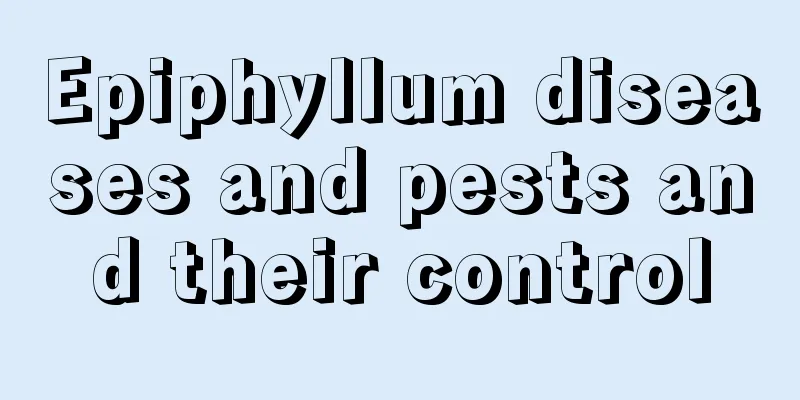Epiphyllum diseases and pests and their control

Epiphyllum pestsaphidAphids are a common insect pest on plants. When aphids appear on Epiphyllum, if there are few insects, you can kill them manually by brushing them off with tools such as brushes, or you can spray pesticides. There are special insecticides for aphids. Red SpiderRed spider mites are pests that suck plant sap with their mouthparts, endangering the health of Epiphyllum. When you find red spider mites on Epiphyllum, you can use pesticides to kill them, or you can use pepper water, tobacco water spray and other methods to repel insects. Scale insectsScale insects are common pests of Epiphyllum and are extremely difficult to eradicate completely. When the disease occurs, the leaves will be covered with small white spots, which is a terrible sight. The body of scale insects is covered with a layer of keratinous shell, so it is not easy to kill them with pesticides. However, spraying during the larval stage of the insects is more effective. When Epiphyllum is attacked by scale insects, you may try some folk remedies, such as wiping the diseased plants with white wine, vinegar, alcohol, laundry detergent, etc., which has a certain effect. Diseases of EpiphyllumanthraxAmong the several diseases of Epiphyllum, Anthracnose is very common. When the disease occurs, brown spots appear on the leaves, then continue to expand, the leaves turn yellow, and even the entire leaf dies. Anthracnose is generally caused by bacteria and is prone to occur in the summer when the temperature is high and the humidity is high. When a disease is discovered, the source of infection must be controlled. Generally, prevention is the main approach, with appropriate water control, lower air humidity, and increased ventilation. If you find diseased leaves, you can cut them off to prevent the disease from spreading. Root rotEpiphyllum can suffer from root rot, which causes the roots to rot and the leaves to wrinkle, causing great harm. Root rot is usually caused by fungal infection or insects in the roots. Overwatering can also cause root rot. The basic treatment method is to control watering to avoid over-wetting of the soil in the pot; remove rotten roots and re-cutting; change the pot and soil, and disinfect the roots and new soil. |
<<: Diseases and pests of red spider lily and their control methods
>>: Pests and diseases of Araucaria and their control methods
Recommend
The efficacy and function of bamboo leaves
1. Relieve irritability Bamboo leaves have a good...
What is the propagation method of sunflowers? How to propagate sunflowers that do not produce seeds?
1. Seed propagation 1. Time: Sowing is a commonly...
Freesia cultivation methods and precautions
soil Freesia prefers loose, water-retaining and w...
Can cactus grow in the fall?
1. Can grow Cacti can grow in autumn. Because spr...
What are the methods of propagating African violets?
Seed propagation of African violets Sowing time: ...
Why is it difficult to raise azaleas?
1. Reasons for difficulty in raising The reason w...
Characteristics of Kalanchoe
1. Appearance characteristics 1. Plant shape: The...
How to prune the maidenhair fern
When is the right time to prune the maidenhair fe...
Is soilless cultivation of Sedum effective?
one. Advantages of soilless cultivation: 1. This ...
What flowers are suitable for growing indoors in dry conditions during winter?
1. Chlorophytum comosum Among many green plants, ...
Cultivation methods and precautions of lisianthus
1. Soil It is recommended to use loose, nutritiou...
Fig Growing Conditions
1. Temperature requirements Figs are resistant to...
Can potatoes be grown all year round? How many seasons can they be grown in a year?
The origin of potatoes is in the Andes Mountains ...
How to propagate camellia
1. Seed propagation Collect the seeds when the fr...
How to prevent and treat rheumatism in dairy cows?
Rheumatism in dairy cows is also known as arthrit...









